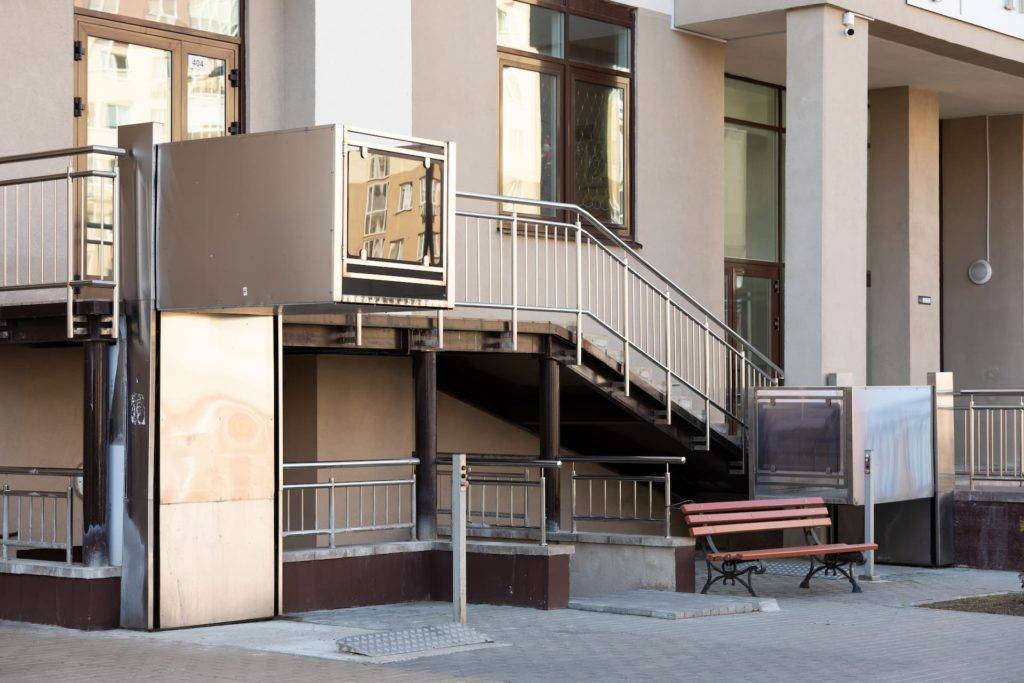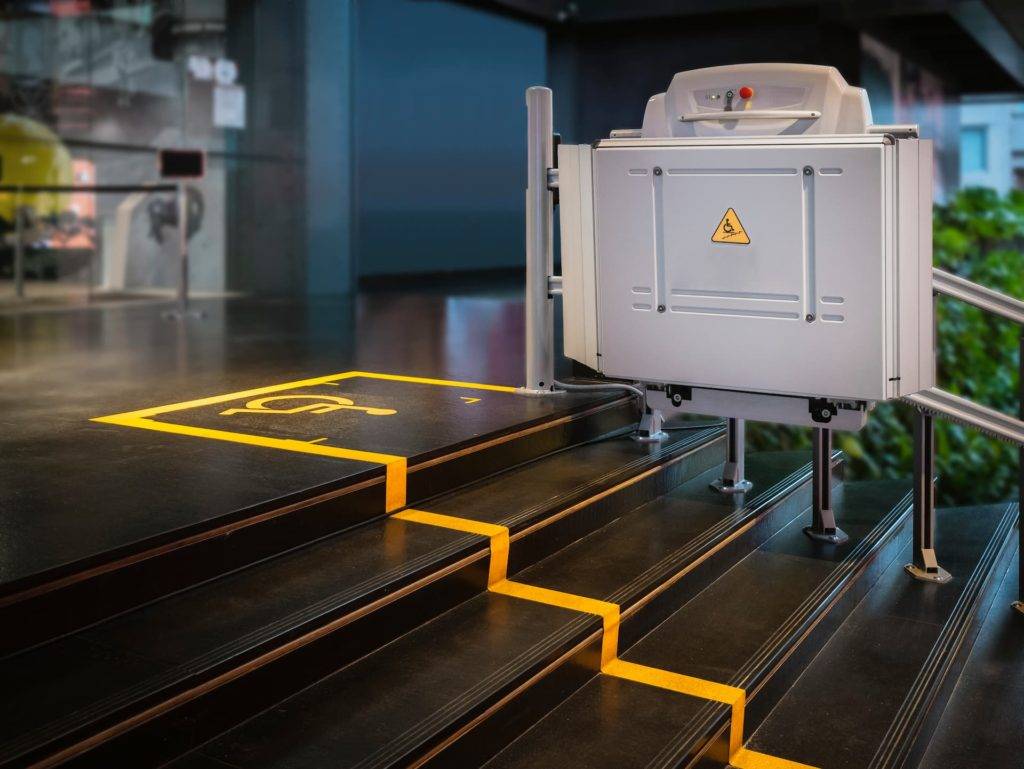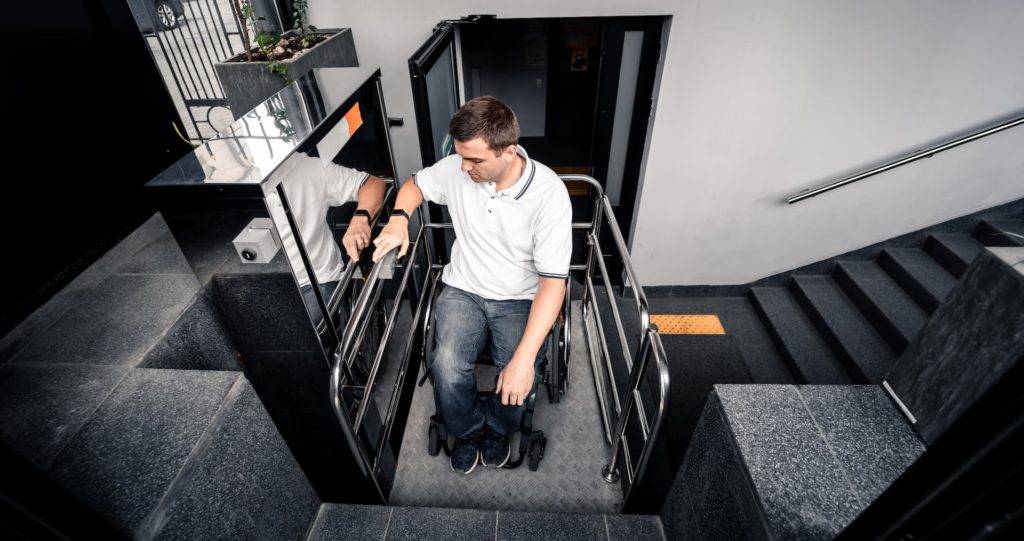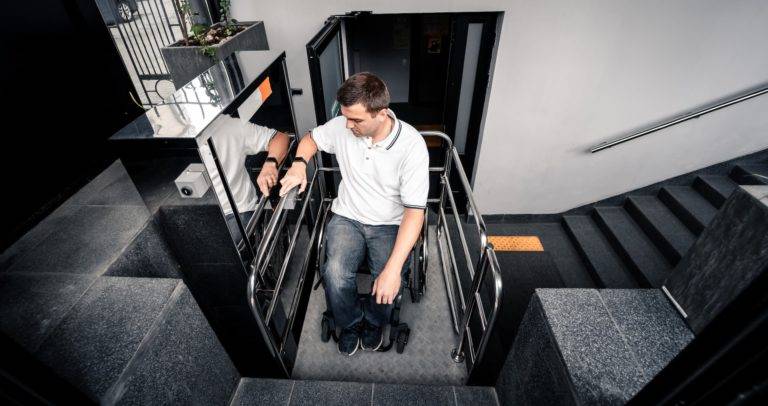Table of Contents
Platform lifts are a great solution for individuals with mobility issues, helping them move safely and comfortably between different levels in homes and commercial buildings. With so many options available, choosing the right platform lift can feel overwhelming. This guide will break down the various types of platform lifts and the key factors to consider when making your choice.
What Is A Platform Lift?
A platform lift is a motorised platform designed to transport people or goods between different levels. Unlike traditional lifts, platform lifts are often more affordable, compact, and easier to install, making them ideal for homes, small businesses, and public spaces. They are widely used to improve accessibility for wheelchair users or people who find stairs difficult to navigate.
An Overview Of Platform Lift Features, Benefits, Types & Applications
There are several types of platform lifts, each designed for specific environments and needs. Vertical platform lifts move up and down between floors, often seen in homes or small buildings. Inclined platform lifts run along a staircase, making them a practical option where space is limited. Step lifts help users navigate small sets of stairs, while cabin platform lifts offer an enclosed space for added comfort and safety.
Platform lifts are commonly used in homes, commercial spaces, public buildings, and even outdoors to ensure access to different levels is safe and easy.

Commercial Lifts
Commercial platform lifts are designed to meet the demands of businesses and public spaces. They often feature higher weight capacities, durable materials, and compliance with building regulations. For businesses, the benefits include improved accessibility for staff and visitors, helping to meet legal requirements for access.
When choosing a commercial lift, key considerations include space, weight capacity, and the frequency of use. It’s important to select a lift that can handle daily traffic while ensuring it fits comfortably in the space available.
Step Lifts
A step lift is a smaller platform lift designed to help people navigate short sets of stairs, such as those found at building entrances or within homes. These lifts are perfect for users with limited mobility who need assistance with small steps but don’t require a full stairlift or vertical lift. They are compact, easy to use, and can be installed with minimal disruption.
Cabin Platform Lifts
Cabin platform lifts are similar to traditional lifts but with a simpler design. The cabin offers an enclosed space for the user, providing more comfort and privacy than open platform models. These lifts are ideal for homes and small businesses where safety and comfort are a priority. Cabin lifts can be customised to fit specific needs, making them suitable for various applications.
Hybrid Platform Lifts
Hybrid platform lifts combine the features of different types of lifts to offer greater flexibility. For example, a hybrid lift may function both as a vertical lift and a step lift, providing a solution for multiple floors or uneven ground. While hybrid lifts can be incredibly versatile, they may also be more expensive and complex to install. If you need a lift that adapts to different environments, a hybrid model could be a good choice, but it’s important to weigh the costs against the benefits.
Wheelchair Platform Lifts
A wheelchair platform stairlift is an inclined lift that runs along a staircase, designed specifically for wheelchair users. These lifts offer an accessible way for individuals to move between levels without transferring from their wheelchair. Installation is straightforward, and they can be fitted to most types of staircases. They provide an ideal solution for homes or buildings where space is limited, and a vertical lift is not feasible.

Height, Cost & Size Considerations For Platform Lifts
When choosing a platform lift, it’s important to consider the maximum height it can reach. Vertical platform lifts can usually handle between one and two floors, depending on the model. For taller buildings, you may need a more powerful lift or even consider a traditional lift. Always ensure the lift you choose can comfortably handle the height you need to avoid any future issues.
Appropriate Sizes & Dimensions
Before installing a platform lift, you’ll need to determine the appropriate size for your space. Measure the width and length of the area where the lift will be installed to ensure a proper fit. Keep in mind that some lifts require extra space for mechanisms, such as doors or rails. It’s also important to consider the size of the platform itself, ensuring it can accommodate wheelchairs or other mobility aids if necessary.
Cost Factors
The cost of a platform lift depends on several factors, including the type of lift, the complexity of the installation, and any customisation required. Vertical platform lifts tend to be more affordable, while hybrid or cabin lifts can be more expensive due to additional features and design complexity. Installation costs can also vary, particularly if any structural changes are needed to fit the lift. It’s important to get a clear quote from your supplier to avoid unexpected expenses.

How To Choose The Right Supplier For Platform Lifts
Selecting the right company to supply your platform lift is key to ensuring a smooth process from start to finish. Look for a supplier with a strong reputation and experience in the industry. They should offer a range of products to suit your needs and provide excellent customer service, including after-sales support and maintenance.
The Benefits Of Independent Suppliers
Choosing an independent supplier can offer several advantages. Independent suppliers often provide more personalised service and flexibility, allowing for custom solutions to meet your specific needs. They may also offer more competitive pricing compared to larger chains, giving you more value for your money.
Selecting An Installation Contractor
Ensuring your lift is installed by a qualified professional is critical for safety and performance. Look for an installer with the appropriate certifications and experience in fitting platform lifts. A good installer will also offer guidance on maintenance and servicing to keep your lift in good condition over time.
Extra Considerations For Residential Lifts
Residential platform lifts come in a variety of designs, including step lifts, vertical lifts, and cabin lifts. When choosing a lift for your home, consider the available space, the number of floors you need to access, and your specific mobility needs. Residential lifts can significantly improve quality of life by offering independence and ease of movement within the home.
Understanding The Requirements For Commercial Lifts
Commercial lifts must meet specific building regulations and accessibility standards. When installing a lift in a business or public building, it’s important to ensure the lift complies with legal requirements, including weight capacity, safety features, and ease of access for all users.
Contact Dolphin Stairlifts For Platform Lift Suppliers & Installers
Choosing the right platform lift depends on a range of factors, including your space, mobility needs, and budget. Whether you need a simple step lift or a fully customised cabin lift, there’s a solution to fit your needs. By considering the factors outlined in this guide and consulting with a reliable supplier, you can find the perfect lift to enhance accessibility and improve quality of life. Get in touch with Dolphin Stairlifts for more information.
